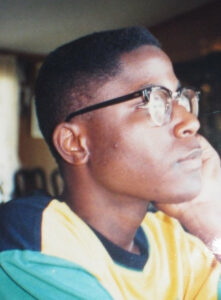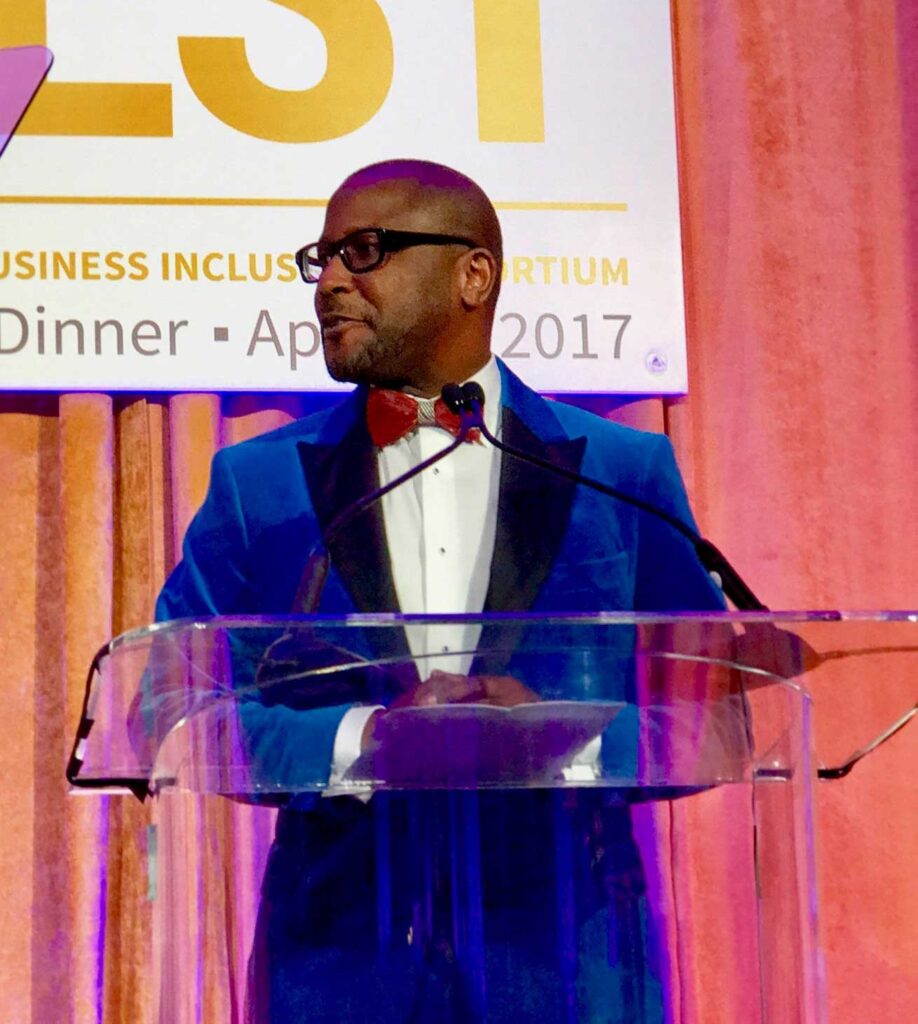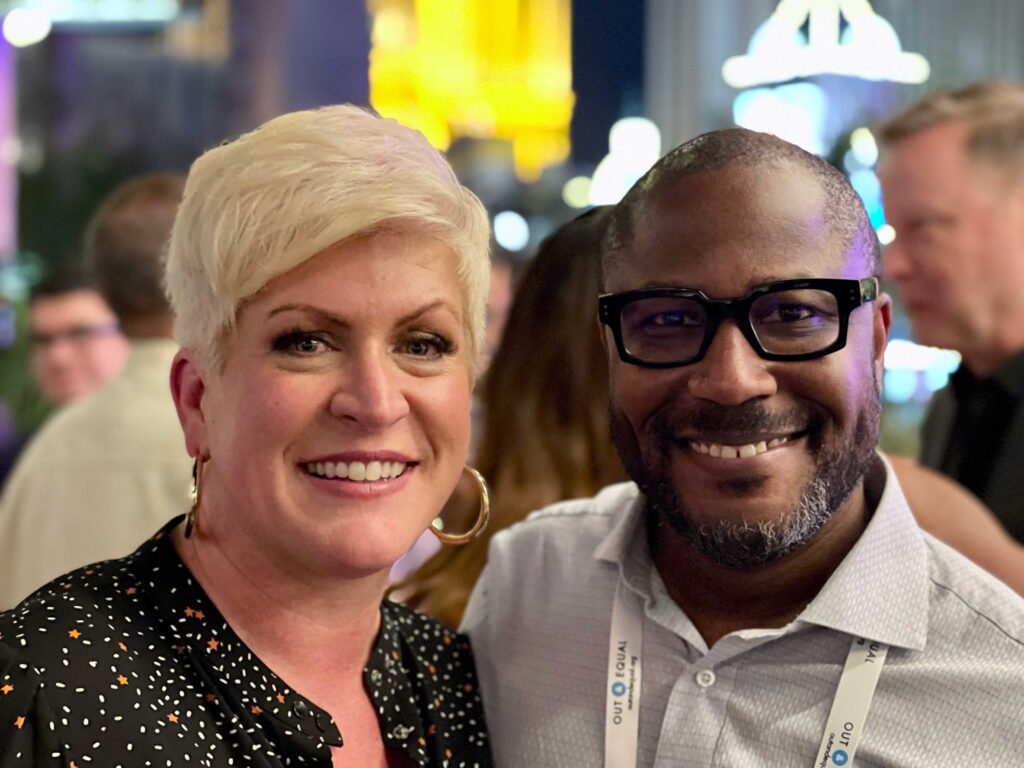Meet Out & Equal’s New Board Chair
January marked a new era of leadership at Out & Equal with the election of a new Executive Committee to the Board of Directors, which included the selection of Allyn L. Shaw of Wells Fargo as the new Board Chair.
As he began his new role, the Out & Equal team had an opportunity to sit down with Allyn. In this engaging discussion, we touch on numerous topics that include his personal leadership journey, the value of Diversity, Equity, Inclusion, and Belonging (DEIB) in the workplace, what it means to be an intentional ally in 2024, and his vision for Out & Equal now and into the future.
Before we dive into your vision for Out & Equal and what it means to be Board Chair, let’s start closer to the beginning. How did you come to realize your identity as a LGBTQ+ individual?

There are a lot of factors that play into the discovery of a person’s identity. As a Black, Queer man with multiple disabilities, I’m very much aware of my intersectionality. Not to mention, society rarely fails to remind me of my difference.
My first memories around identity were tied to sports and my time in the Reserve Officers’ Training Corps (ROTC). It was early on that I realized I was often picked first, not for my intellect but my physical attributes. I was lean, quick, and strong. People saw me as a Black athlete first and not as a gay or LGBTQ+ person. It was a contrast to the experience I witnessed some of my Queer friends go through, where they faced a different set of circumstances, experiences, and interactions with others.
Building on identity and intersectionality, the LGBTQ+ community is not a monolith or singular set of people, characteristics, or archetypes. Tell us about your thoughts on the power of intersectionality and why it’s so important to recognize it in the workplace and beyond.
You’re right. We are not monoliths—none of us are. There’s so much that goes into difference and the identities, culture, and lived experiences that make us unique—let alone an entire community—and how that impacts how we show up in the workplace.
You think about culture. What was going on at home before they arrived? What are some of the challenges? That can include transportation, childcare, housing, maybe their faith-based belief in contrast with societal trends. But also, what do they celebrate? The music, food, art from their native land or a religious ceremony deeply rooted in their family lineage. To me, this is at the center of difference and intersectionality.
And when you engage individuals in the workplace and really take the time to see who is in front of you, you start to appreciate that none of us are singular really. We are a combination of many threads—gender, race, ethnicity, experiences, faith, culture, and sexual expression—that are brought together to create this cloth we call community.
And when you engage individuals in the workplace and really take the time to see who is in front of you, you start to appreciate that none of us are singular really. We are a combination of many threads—gender, race, ethnicity, experiences, faith, culture, and sexual expression—that are brought together to create this cloth we call community.
Recognizing who people are in the workplace and creating cultures of inclusion where all individuals can show up authentically, contribute, and thrive, is critical to the success of any organization. Can you talk about the value of DEIB in the workplace and its return on investment to companies?
Intellectually, we all know there is a benefit to DEIB, but rarely do we connect the dots to the benefits to business like growth, profits, and talent attraction and retention.
Often an approach to appreciating and valuing your customer means bringing in the very people who truly reflect the cultural aspects and experiences of a community and investing directly in those communities. It’s an authentic imperative to create sustainable adoption of the capabilities, services, and products delivering value to the customers you aim to serve.
That’s a direct line to profitable revenue and to an entire community of individuals and families that will buy your product and be loyal to your brand because they see themselves, their community, their heritage, and their culture in the services you are offering every single day.
A simple example could be investing in Black communities. This investment will lead to an increase in social and economic growth tied to a rise in entrepreneurship, and often home ownership. This creates not only immediate wealth for the community at large, but generational wealth for decades to come. That means more people to buy your product.
And to ensure you’re attracting and retaining the talent to build the culture that elevates a brand, you must authentically lead with belonging. People care about what you believe in as a company and how companies support and advocate for your community. Do the morals, values, and principles companies espouse align to the action taken?
As we talk about inclusion and belonging, we must acknowledge the role of intentional and authentic allyship. How do you approach allyship?

Inclusion Consortium in 2017.
We are often taught that an effective, deliberate, intentional, and productive ally must give up their power and their seat. Never in the history of the world did a ruler, monarch, dictator or pharaoh give away their power or influence to someone else. The very construct of our countries, states, and society at large was built around the consolidation of power. Let’s face it, it’s a tough thing for people to acknowledge and to do, right? But is it truly required? Why not start with adding a seat to the table for others? A topic and conversation for another day.
I want to see allies be active and intentional. It’s going beyond wearing a pin or displaying a sticker. It’s stopping conversations that are not thoughtful or respectful to a colleague. It’s taking the time to understand what institutionalized power looks like and one’s role in it. Hand over the microphone and give people the opportunity to be seen and heard. It’s using the microphone differently by speaking up for those who are not in the room.
So, how can allies become more intentional and active as you noted above?
Proximity. How can you truly understand what it’s like?
You must take the time to talk to individuals, understand the discriminatory ways that often plague them, and if you have the ability, ask questions and spend time with their families to understand how policies, spaces, and legislation impact them.
When we lack proximity, we lack understanding, and we leverage (unconsciously or otherwise) our assumptions and biases. It is why storytelling is so important and impactful. People understand a story and the individual behind them. It has the power to shift the energy in the room and create moments of meaningful change and progress. It’s developing a deeper curiosity about people and following it. So, embrace proximity and go spend a little time with people who are not like you.
When we lack proximity, we lack understanding, and we leverage (unconsciously or otherwise) our assumptions and biases.
Looking at your organization, how do you measure the effectiveness of allyship efforts? And how do you assess the impact of your initiatives to ensure allyship translates into tangible advancements for underrepresented employees?
I’ll share real examples. Wells Fargo Technology has diversity, equity, and inclusion training for all our employees; encourages active participation across 10 employee resource networks (ERNs); and provides numerous opportunities to engage in diversity-centric events and activities each month throughout the communities we serve.
This year, we are rolling out mandatory Cultural Intelligence workshops to managers of mobility program participants that center underrepresented talent in technology. The plan is to extend these workshops to all managers in 2025 as required learning.
While programs and initiatives are critically important, it’s just as critical we measure impact and effectiveness. To do this, we leverage quarterly diversity dashboards and diversity scorecards to measure representation, mobility, and inclusion within the technology organization. This data is used to highlight success and pinpoint opportunities for improvement, where it is needed most.
We also believe in the direct involvement of leadership. It’s why our most senior executive leaders in technology are also active sponsors and participants in the Technology DEI Council that meets regularly.
Switching gears, what interested you in joining the Out & Equal Board?
It’s probably the first time in my 30-year career where I had the opportunity to work alongside incredibly brilliant, smart, capable, and innovative leaders who all shared something in common, but looked totally different. We’re united by a common thread and purpose: to advance LGBTQ+ equity, inclusion, and belonging.
It was amazing to me to sit across a Board table and talk about our community. What are we going to do, how are we going to engage, how will we convene, and more importantly, how do we continue to bolster organizations like Out & Equal to make sure that we’re providing the products, services, and capability that support organizations and their employees?
So, when I looked at the Board of Out & Equal, it was easy for me to say, “I want to be part of that community.”
And now as Board Chair, what are you most excited for?

Within this role, there are a couple of things.
To start, I love learning. And quite simply, I’m excited to learn. Learn about what’s happening at companies across various sectors, the emerging practices they are examining, how they are approaching the challenges and opportunities of today and tomorrow and sharing their insights and learnings with the larger community.
Second, as a man of African descent, I’m looking forward to diving deeper into conversations around racial equality as it relates to workplace advocacy. I want to ensure we’re thinking about representation and thoughtfully talking about racial equity. How can we as an organization facilitate those discussions and incorporate them into workplace practices?
Finally, we have our niche at Out & Equal, and we do it incredibly well. But movements require progress on multiple fronts. And this means continuing to work closely with our peer organizations to advance the cause. We are stronger and better together, and we always will be.
As a relentless optimist, I’m hopeful and excited for the future. Progress has been made, and we should pause, acknowledge, and celebrate. We just can’t be distracted knowing that there is still so much more to be done.